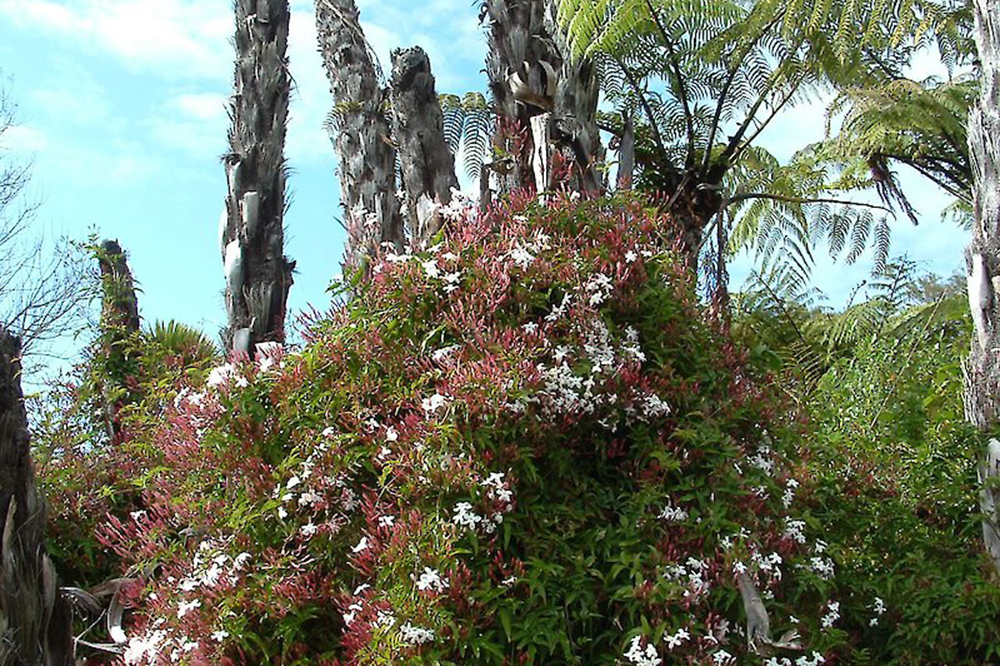Story
White jasmine: How to control it
By Sara Brill, Biosecurity Specialist – Pest Plant Partnerships at Northland Regional Council.
The intoxicating fragrance of flowers have charmed garden enthusiasts and non-enthusiasts for centuries, with jasmine a firm favourite. There are many species within the jasmine family and like any family, there's a troublemaker (or two). In Northland, white jasmine (Jasminum polyanthum) is the troublemaker, but the good news is that now is a great time to get rid of it.
Native to China and Myanmar, white jasmine was introduced to New Zealand as an ornamental species. It is an evergreen, scrambling climber that grows up to 12 metres tall and can live up to twenty years. You can identify white jasmine by its dark green, smooth-edged leaves that are arranged in opposite pairs on stems. It produces clustered, tube-like pink buds that bloom an abundance of fragrant white flowers all year long. Its flowers have five petals and look star-like.
Often spread through dumped garden waste, white jasmine can be found in shrubland, forest margins and clearings, riparian zones, roadsides, abandoned houses, waste sites, and will definitely sneak its way into your garden if it has the chance.

Pink tube-like buds and star-like flowers. (Photo: Weedbusters).
It creeps its way through forests and gardens to strangle plants and trees, stunting their growth and preventing regeneration of seedlings and juveniles.
The rapid growth and long-lived nature of white jasmine means that it can quickly form dense mats, starving native species of light. It is also incredibly shade tolerant and can survive in a range of soil types, including areas with poor drainage.
The fruit of white jasmine are small enough to be distributed by birds, although it doesn’t often produce seed. It usually spreads and creates new patches via underground runners.

White jasmine creeping into the forest. (Photo: Weedbusters).
How to control white jasmine:
- If you are trying to get rid of a small amount of white jasmine, hand removal is best. Make sure to all stem and root fragments are dug out. Place it off the ground to dry thoroughly, before letting it rot down in the compost or taking it to your local green waste centre.
- For larger patches, spray with glyphosate or metsulfuron (5g per 10 litres of water) plus 10mls of penetrant.
When using herbicide please read the label thoroughly and ensure all instructions and safety requirements are followed.
For more information on white jasmine and other pest plants, contact Northland Regional Council on 0800 002 004 and ask to speak to a biosecurity officer, or visit: www.nrc.govt.nz/pestcontrolhub
Plant this insteadIf you’re looking for something to replace white jasmine with, star jasmine (Trachelospermum jasminoides) is a lovely alternative. It grows at a slower rate, but still produces an abundance of beautifully scented flowers to enjoy through spring and summer. |

Star jasmine (Photo: Auckland Botanic Gardens).
